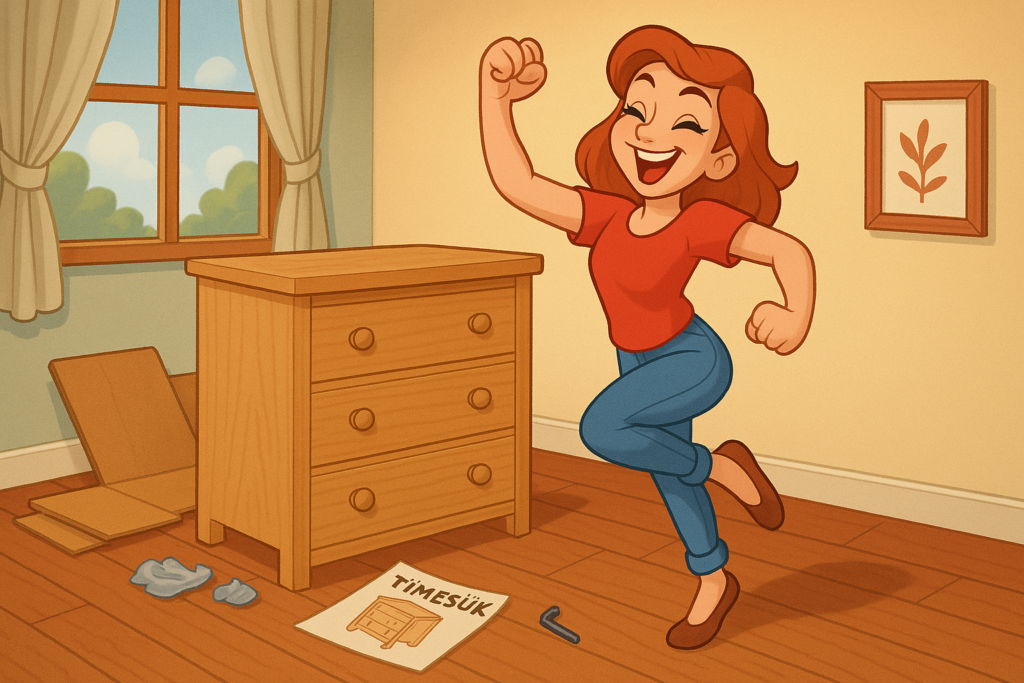
So far in our exploration of psychological barriers to purchase, we’ve examined biases that primarily block sales.
Today, let’s look at a bias that can actually enhance value perception — IF you do it right.
The IKEA Effect, named after the Swedish furniture giant that needs no intro, describes our tendency to place higher value on products we’ve partially created ourselves.
I’ve experienced this firsthand more times than I even want to think about.
I have put together everything from IKEA chairs to full kitchens, muttering like a hostile Swedish Chef while hunting for that dorned missing screw, or wondering how a simple drawer can require 47 frooking parts.
And maybe you can relate: I have a love-hate relationship with their labyrinthine stores. Truthfully, more on the latter side.
Yet, I go back. I soldier through.
Again and again, year after year.
This isn’t Stockholm syndrome (maybe Älmhult syndrome?). It’s a documented psychological phenomenon where the effort we invest creates a BOND with the final product, as well as the brand.
In the landmark study that identified this bias, led by Michael I Norton at the Harvard Business School, researchers had participants build simple IKEA boxes, origami figures, and Lego sets. (It’s a well-done report I had never read directly before. Check it out at the link.) Consistently, people valued their own creations substantially higher than identical pre-built versions — even when their handiwork was objectively inferior.
But this is what people, including many marketers, often misunderstand: We don’t pay extra for the “privilege” of building our own furniture.
The labor itself creates an emotional investment that:
- Increases perceived value post-purchase
- Creates stronger product attachment
- Reduces return rates
- Enhances brand loyalty
- Generates positive word-of-mouth
In I Need That, I discuss how products succeed when they trigger what I call “the flip” from want to need. The IKEA Effect explains why involvement in creation can accelerate this flip. We’re far more likely to feel we “need” something WE personally helped create.
It’s like how my kids enjoy a cake more when they “helped” make it, even if the result took longer and may contain more eggshells than it otherwise would have.
Product Payoff: Build-A-Bear Workshop founded in 1997 by Maxine Clark, built a $555-million-dollar business by transforming a simple stuffed animal (typical retail: $15) into a $50+ experience where children participate in creating their own toy. Despite the premium price, parents readily pay because the child’s involvement in stuffing, “heart ceremony,” and naming creates powerful emotional attachment a pre-made toy can’t match. This co-creation model has kept them profitable for 28 years in an otherwise struggling, disgustingly cutthroat retail toy market.
Action for today: Think of 2-3 ways to appropriately involve customers in “co-creating” your product experience. Hear me out: this doesn’t mean shipping half-finished products. You want to find the sweet spot where customer participation creates meaningful attachment without frustration. Look for small customization opportunities, personalization options, or setup processes that give customers a sense of investment without overwhelming them.
How can you flip “I DID that” into “I NEED that”?
In our final email of this series, we’ll bring all these wacky biases together into a practical framework for creating a bias-proof product strategy.
Have you experienced the IKEA Effect with a product?
Tap that reply arrow and tell me how you’ve benefited from customer participation.
I love when readers do, and ALWAYS write back.
Or reach out to my team of product marketing specialists at Graphos Product.
